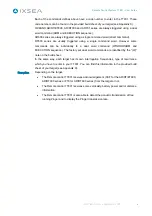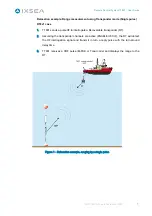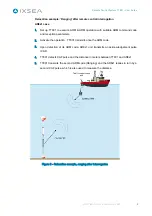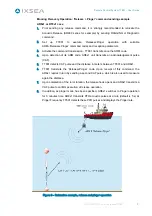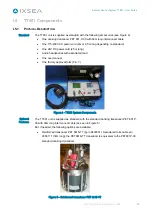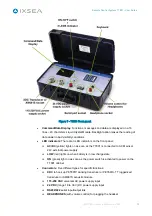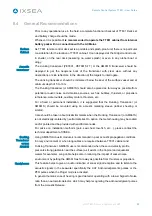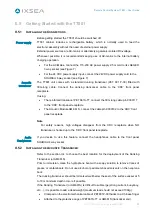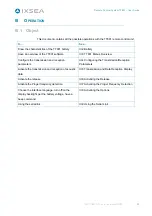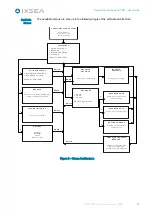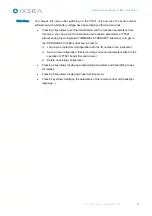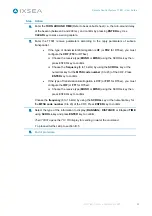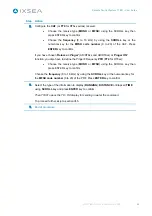
Remote Control System TT801 – User Guide
MU-TT801-AN rev.6 September 2009
20
II.4 General Recommendations
Prior to any operational use in the field, a complete functional checkout of TT801 Deck set
and battery charge should be made.
Whenever it is possible,
it is recommended to operate the TT801 cabinet from internal
battery pack with no connection with the AC Mains
.
As TT801 remote control deck set is a portable and splash-proof unit, there is no particular
consideration for the location of TT801 cabinet: It can deployed at the bridge/control room,
in shelter, on the rear deck (assuming no water splash) or even in any rubber boat or
dingy.
The dunking transducer (PET801, PET661S-TT) or the AM661S transceiver should be
deployed to get the neoprene boot of the transducer with clear view, without any
obstructions or side reflectors, in the direction of the targets to interrogate.
The dunking transducer should be immersed below the keel of the surface vessel and at
minimum depth of 5 to 10 m.
The Dunking transducer (or AM661S) should also be placed as far away as possible from
potential acoustic noise and vibrations sources, such as bubbles, thrusters or propellers
turbulence, water outlets, auxiliary motors, thrusters, etc…
For a fixed or permanent installation, it is suggested that the Dunking Transducer (or
AM661S) should be mounted using an acoustic isolating sleeve (rubber sheeting or
similar).
Care should be taken about dissimilar metals when the Dunking Transducer (or AM661S)
is not electrically isolated by neutral material. On option, the metal housing may be coated
and/or painted and be provided with sacrificial anodes.
For advice on installation methods (pole, sea chest, tow-fish, etc…), please contact the
technical department of IXSEA.
Using AM661S Acoustic module is recommended in poor acoustic propagation conditions,
in noisy environment or when long cables are required between TT801 cabinet and
Dunking Transducer. AM661S use is recommended when the sound velocity profile
presents strong gradients near the surface (as it exists in the tropical and equatorial
waters for example). Long cable helps also in reducing the impact of vessel noise
environment by getting the AM661S as far away as possible from thrusters or propellers.
This feature helps to give an audio indication of sonar signal reception and to listen to the
acoustic signals in the seawater specifically the CAF Acknowledgements pulses or the
PFR pulses when the Pinger mode is activated.
In general human sense of hearing is good detector operating with a lower Signal to Noise
ratio than an automatic detector, which may help recognizing the acknowledgment pulses
from the Acoustic Release
Surface
Cabinet
Acoustic
transducer
Dunking
Transducer
versus
AM661S
Headphones
Summary of Contents for TT801
Page 1: ...TT801 Remote Control System User Guide...
Page 2: ......

